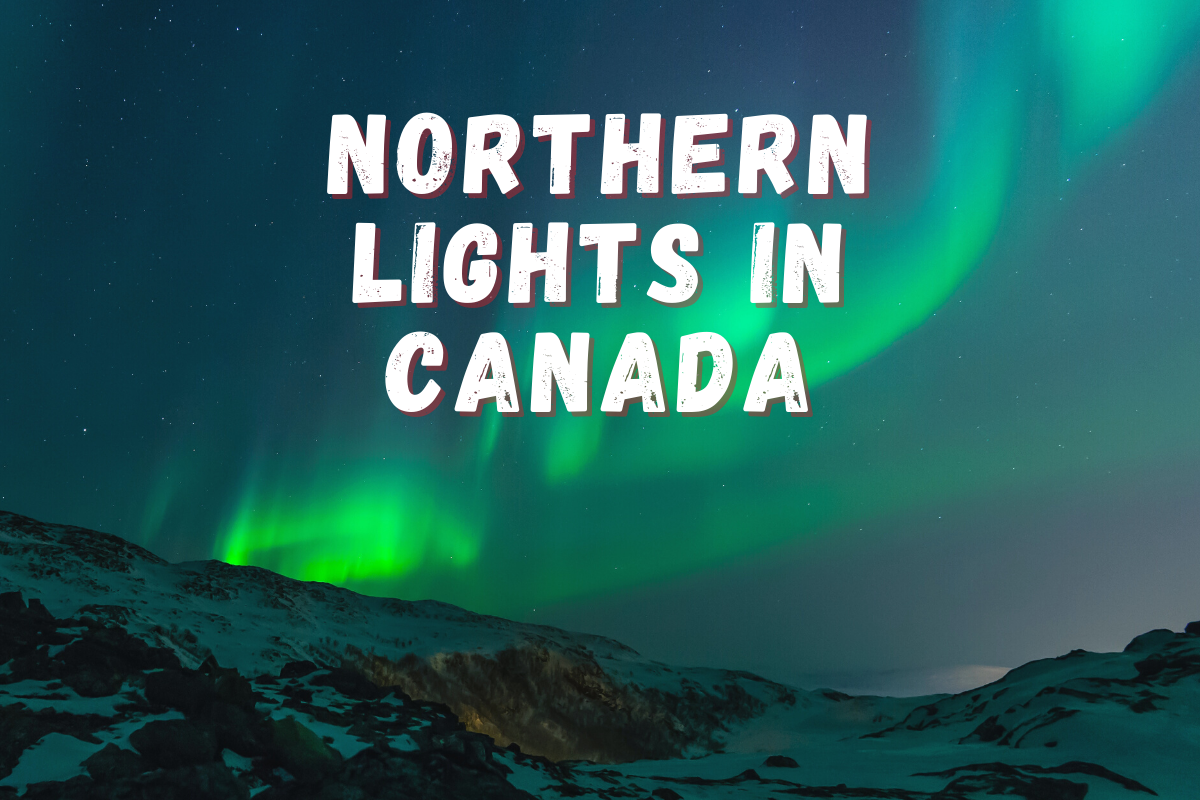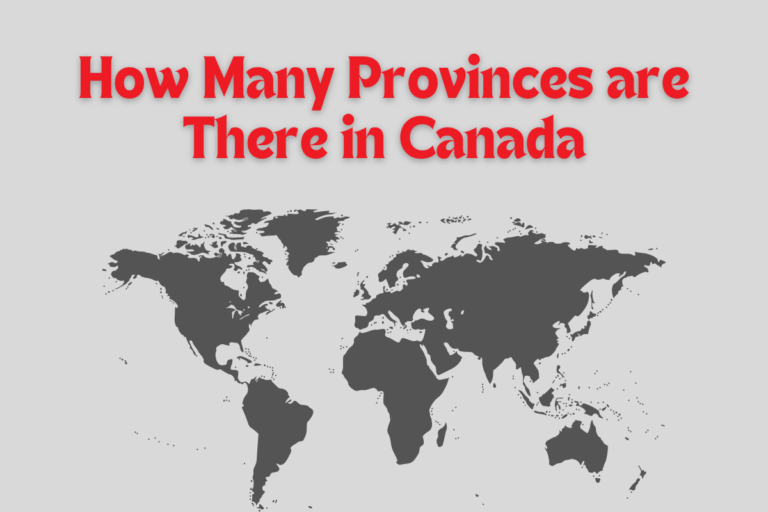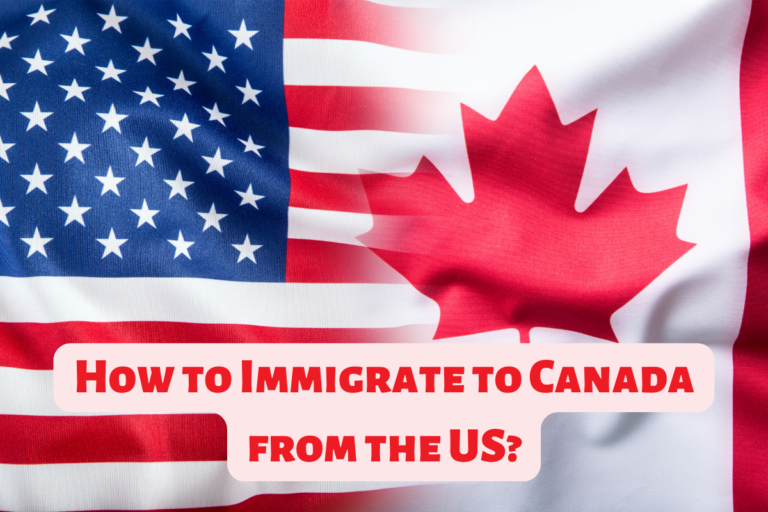Best Places to See the Northern Lights in Canada
Canada is known for its vast and pristine wilderness and offers several great locations to see the Northern Lights. Some of the best places to see the Northern Lights in Canada include:
- Yellowknife, Northwest Territories: Yellowknife is one of the best places to see the Northern Lights in Canada, with clear skies and high levels of solar activity. The town is located on the shores of Great Slave Lake and offers various tours and activities to view the lights.
- Whitehorse, Yukon: Whitehorse is another great place to see the Northern Lights in Canada, with clear skies and high levels of solar activity. The town is located in the heart of the Yukon and offers various tours and activities to view the lights.
- Churchill, Manitoba: This small town is located on the shores of the Hudson Bay and is known as the “Polar Bear Capital of the World.” Churchill is also one of the best places to see the Northern Lights in Canada, with clear skies and high levels of solar activity.
- Jasper National Park, Alberta: Jasper National Park is located in the Canadian Rockies and offers a chance to see the Northern Lights in a natural and pristine wilderness setting.
- Nunavut: Nunavut is a vast and remote territory in Northern Canada, with many areas with clear skies and high levels of solar activity. The best places to see the Northern Lights in Nunavut include Iqaluit, the territorial capital, and communities such as Cambridge Bay, Rankin Inlet, and Pond Inlet.
It’s worth noting that the Northern Lights are a natural phenomenon, and their visibility can be affected by various factors such as weather conditions, solar activity and other environmental factors.
Yellowknife, Northwest Territories
Yellowknife is the capital and largest city of the Northwest Territories, Canada. It is situated on the northern shore of Great Slave Lake, and is known for its spectacular Aurora Borealis (Northern Lights) displays. Yellowknife is one of the best places to see the Northern Lights in Canada, with clear skies and high levels of solar activity. The lights can be seen from late September to April, with the best viewing typically in the months of December and January.
Yellowknife offers several ways to experience the Northern Lights, including organized tours by bus, snowmobile, dog sled, or even by ice fishing on Great Slave Lake. There are also several Aurora-viewing spots around the city such as the Old Town, the Yellowknife River and Prelude Lake.
Yellowknife is also a great place to explore the natural beauty of the Northwest Territories. Visitors can experience the traditional culture of the Dene First Nations people, take a dog sledding tour, go ice fishing, or visit one of the several nearby lakes and parks for hiking, canoeing and fishing.
Yellowknife is also a hub for mining, particularly diamond mining, and visitors can take tours of the diamond mines to learn about the process of mining and how diamonds are extracted. The city has also a rich history, which can be explored by visiting the Prince of Wales Northern Heritage Centre or the Yellowknife Museum.
Yellowknife has a small but diverse population, with a mix of Indigenous, European and other cultures. The city offers a range of dining options, with many restaurants serving traditional northern cuisine.
Whitehorse, Yukon
Whitehorse is the capital and largest city of the Canadian territory of Yukon. It is located in the Whitehorse Valley, near the confluence of the Whitehorse and Yukon Rivers, and is known for its spectacular Aurora Borealis (Northern Lights) displays. Whitehorse is one of the best places to see the Northern Lights in Canada, with clear skies and high levels of solar activity. The lights can be seen from late September to April, with the best viewing typically in the months of December and January.
Whitehorse offers several ways to experience the Northern Lights, including organized tours by bus, snowmobile, dog sled, or even by taking a riverboat tour on the Yukon River. Visitors can also take a drive on the nearby Klondike Highway, which offers several great Aurora-viewing spots.
Whitehorse is also a great place to explore the natural beauty of the Yukon. Visitors can experience the traditional culture of the First Nations people, take a dog sledding tour, go ice fishing, or visit one of the several nearby lakes and parks for hiking, canoeing, and fishing.
Whitehorse has a rich history, which can be explored by visiting the MacBride Museum of Yukon History, the Whitehorse Copperbelt Railway and Mining Museum and the SS Klondike National Historic Site.
Whitehorse is a vibrant city with a small but diverse population, with a mix of Indigenous, European and other cultures. The city offers a range of dining options, with many restaurants serving traditional northern cuisine. The city also has a thriving arts and culture scene, with several galleries, performance venues and annual events.
It’s worth noting that Whitehorse is an adventure-seekers paradise, with options for skiing, snowboarding, ice fishing, dog sledding, hiking, and river rafting.
Churchill, Manitoba
Churchill is a small town located on the shores of the Hudson Bay in the Canadian province of Manitoba. It is known as the “Polar Bear Capital of the World” and is one of the best places to see the Northern Lights in Canada, with clear skies and high levels of solar activity. The lights can be seen from late September to April, with the best viewing typically in the months of December and January.
Churchill offers several ways to experience the Northern Lights, including organized tours by bus, snowmobile, dog sled, or even by taking a tundra buggy tour. Visitors can also take a drive on the nearby Churchill-Nelson River Road, which offers several great Aurora-viewing spots.
Churchill is also a great place to see other Arctic wildlife such as polar bears, beluga whales, and Arctic foxes. Visitors can take a guided tour to see these animals in their natural habitat, or go on a dog sledding or snowmobiling tour to explore the surrounding wilderness.
The town also has a rich history and culture, with several museums such as the Prince of Wales Fort National Historic Site, the Churchill Northern Studies Centre and the Eskimo Museum.
One of the most popular activities in Churchill is to take a Tundra Buggy tour, specially designed vehicles that can navigate through the tundra to see the polar bears in their natural habitat.
Churchill is a small town with a population of around 800 people, mostly of Indigenous and European descent. The town offers a range of dining options, with many restaurants serving traditional northern cuisine. The town also has a small but active arts and culture scene, with several galleries and annual events.
It’s worth noting that Churchill’s remote location means that it can only be accessed by plane or train, and that the town’s economy is heavily dependent on tourism, so the prices of accommodation and activities may be higher than in other places.
Jasper National Park, Alberta
Jasper National Park is a national park located in the Canadian Rockies of Alberta. It is known for its spectacular mountain scenery, glaciers, lakes, and abundant wildlife. The park is also one of the best places to see the Northern Lights in Canada, with clear skies and high levels of solar activity. The lights can be seen from late September to April, with the best viewing typically in the months of December and January.
Jasper National Park offers several ways to experience the Northern Lights, including organized tours by bus, snowmobile, or even by cross-country skiing or snowshoeing. Visitors can also take a drive on the nearby Icefields Parkway, which offers several great Aurora-viewing spots.
Jasper National Park is also a great place to explore the natural beauty of the Canadian Rockies. Visitors can take a scenic drive, hike on one of the many trails, or go camping, fishing, and skiing. The park also offers several wildlife viewing opportunities, with animals such as elk, bighorn sheep, mountain goats and bears.
The park also has a rich history, with several historic sites such as the Jasper Heritage Railyard, the Jasper Yellowhead Museum and Archives and the Jasper-Yellowhead Museum and Archives.
Jasper is a popular tourist destination and has a range of accommodation options, from camping to luxury resorts. The town of Jasper, located within the park, is small but offers a range of dining options and activities such as shopping, arts and culture events, and festivals.
It’s worth noting that Jasper National Park can be a busy place during peak tourist season, so it’s recommended to plan ahead and make reservations for accommodations, tours and activities in advance. The park is also home to many natural hazards such as bears, unpredictable weather and rugged terrain, so visitors should be prepared and follow safety guidelines.
Nunavut
Nunavut is the largest and most northern territory of Canada, comprising most of the Canadian Arctic Archipelago. It is known for its spectacular natural beauty, including glaciers, fjords, and tundra landscapes, as well as its rich Inuit culture and history. Nunavut is also one of the best places to see the Northern Lights in Canada, with clear skies and high levels of solar activity. The lights can be seen from late September to April, with the best viewing typically in the months of December and January.
Nunavut offers several ways to experience the Northern Lights, including organized tours by snowmobile, dog sled, or even by taking a boat tour. Visitors can also take a drive on the nearby roads, which offers several great Aurora-viewing spots.
Nunavut is also a great place to explore the natural beauty of the Arctic, with opportunities for activities such as hiking, fishing, and camping. The territory is home to a wide variety of wildlife, including muskoxen, polar bears, Arctic foxes, and narwhals.
Nunavut also has a rich Inuit culture and history, with several historic sites and communities, such as the Iqaluit, the capital of Nunavut, and the Auyuittuq National Park. Visitors can learn about the traditional way of life of the Inuit people, such as hunting and fishing, and take part in cultural activities like drum dancing, storytelling and art.
Nunavut is a remote and sparsely populated area, and as a result, it is not as developed as other regions in Canada. The territory has limited infrastructure and facilities, and access to many areas can be challenging. It’s worth noting that Nunavut has some of the most extreme weather conditions in the world and that visitors should be prepared for harsh winter conditions and limited services.
Tourism in Nunavut is still limited and you can expect to find a limited number of tour operators and accommodations. The best way to plan a trip to Nunavut is to research and plan well in advance, and be prepared for the unique challenges of traveling in the Arctic.




